Q
When is the Release Date of BYD Sealion 7?
The BYD Sealion 7 (known as the Haishi 07 in China), as the brand's first mid-sized pure-electric SUV, is expected to be officially launched in the Malaysian market in the third quarter of 2024. The specific date awaits confirmation from local dealers. This model, built on the e-Platform 3.0, is equipped with the CTB (Cell-to-Body) battery integration technology. It offers both rear-wheel drive and all-wheel drive versions, with a cruising range of up to 500 - 700 kilometers (CLTC standard), and comes with the DiPilot intelligent driving assistance system. Malaysian consumers should pay attention to its wide-temperature heat pump air conditioning technology, which is of practical significance for battery efficiency management in tropical climates. As the Malaysian government is promoting the popularization of electric vehicles, the Sealion 7 may enjoy policy incentives such as import tax exemptions. It is recommended to check the latest incentives before purchasing a car. The vehicle has received positive feedback in the Chinese market. Its intelligent cockpit and Yunliang-C suspension system are worth looking forward to. However, the specific configuration and pricing are subject to the official announcement in Malaysia. It is advisable to obtain the latest information through the BYD Malaysia official website.
Special Disclaimer: This content is published by users and does not represent the views or position of PCauto.
Related Q&A
Q
What segment does the BYD Sealion belong to?
The BYD Sealion is an electric vehicle positioned as a mid - sized SUV (D - Segment). It is mainly targeted at family users and consumers who pursue a sense of technology. Its body size and interior space meet the mainstream standards of this segment, which suits the Malaysian market's demand for practicality and comfort.
As a product of BYD's e - Platform 3.0, the Sealion is equipped with blade batteries and an intelligent electric four - wheel drive system. Its range and power performance are competitive in the same segment. Moreover, it supports fast - charging technology, which meets the local users' expectations for the convenience of electric vehicles.
In the Malaysian market, the mid - sized SUV segment is highly competitive. The entry of the Sealion provides consumers with more new - energy options. Its intelligent features, such as the DiPilot driving assistance system and the rotatable central control screen, also align with the local users' preference for technological configurations.
It's worth noting that the Malaysian government offers tax incentives for electric vehicles, which makes electric models like the Sealion more price - attractive. In addition, vehicles in this segment usually meet both the needs of urban commuting and light off - road driving, making them suitable for the diverse local driving scenarios.
Q
What is the Reslae Value of BYD Sealion?
As a new energy SUV, the second-hand resale value of the BYD Sealion in the Malaysian market will be influenced by various factors such as brand awareness, battery life, local after-sales network, and policy support. Currently, thanks to BYD's global advantage in electric vehicle sales and its battery technology accumulation, the residual value performance of its models in overseas markets is becoming more stable. However, when it comes to the Malaysian market, the resale value of the Sealion needs to refer to the data from local second-hand car platforms. Usually, it depreciates about 20 - 30% in the first year, which is lower than that of fuel vehicles in the same class. Since electric vehicles have lower maintenance costs and are supported by government tax incentives, in the long run, battery health (usually with an 8-year/150,000-kilometer warranty) and the popularity of charging facilities will become the key influencing factors. It is recommended that before purchasing a car, you compare the second-hand market conditions of models like the Tesla Model Y or Proton X90 in the same class, and keep an eye on the policy trends of new energy vehicles in Malaysia, such as import tax exemptions or charging subsidies. These will indirectly increase the demand for second-hand cars. Regular maintenance records and a complete transfer of the warranty can also significantly improve the residual value.
Q
What is the motor power of the BYD Sealion?
The BYD Sealion is a plug - in hybrid SUV with an engine displacement of 1498cc (1.5 liters), which falls within the common displacement range in the compact SUV market. It's well - suited for the daily commuting and family use of Malaysian consumers. As a new - energy vehicle, the Sealion combines the advantages of a traditional fuel engine and an electric motor, offering lower fuel consumption and higher environmental - friendliness while maintaining sufficient power output.
In the Malaysian market, the hybrid system of the BYD Sealion is particularly suitable for local road conditions. It can handle urban traffic congestion and meet the needs of long - distance driving. Moreover, BYD is a globally leading new - energy vehicle brand, and its technological maturity and reliability are widely recognized. The battery and electronic control system of the Sealion have also undergone strict tests to adapt to tropical climate conditions.
For Malaysian consumers, choosing the BYD Sealion not only allows them to enjoy the government's preferential policies for new - energy vehicles but also enables them to experience advanced hybrid technology. It's an ideal vehicle that combines practicality and environmental protection.
Q
What is the Engine applied in BYD Sealion?
The BYD Sealion is equipped with BYD's self-developed third-generation DM-i super hybrid system. Its core power consists of a high - efficiency 1.5L naturally aspirated engine and an electric motor. The maximum power of the engine is 81kW. When combined with the electric motor, the comprehensive output power can reach over 160kW, balancing fuel economy and power performance, which is suitable for both urban commuting and long - distance driving in Malaysia.
This engine adopts the Atkinson cycle technology with a thermal efficiency as high as 43%, significantly reducing fuel consumption. At the same time, it is paired with an E - CVT continuously variable transmission, providing a smooth driving experience. It's worth mentioning that BYD's DM - i technology is mainly driven by electricity, and the engine is mostly used as a high - efficiency generator. Therefore, in pure - electric mode, it can achieve quiet and zero - emission driving, while in hybrid mode, it has excellent range, which is very suitable for the diverse road conditions and environmental protection trends in Malaysia.
In addition, BYD also provides a long - term warranty for the battery pack, so users don't have to worry about battery durability issues. For Malaysian consumers, the BYD Sealion not only has the advantage of low operating costs but also can enjoy the local government's tax incentives for new energy vehicles. It is a hybrid model worthy of attention.
Q
When is the Launch Date of BYD Sealion?
The BYD Sealion was launched in Malaysia from February 23rd to 25th, 2024. Prior to that, pre-orders were officially opened on January 19th, and the estimated price is RM200,000. The vehicle comes in multiple versions. For example, the standard version is equipped with a Single Motor and an RWD (Rear-Wheel Drive) system, with a pure-electric range of 550 km; the long-range version also features a Single Motor and an RWD system, but its range reaches 700 km; the performance version is powered by a Dual Motor and an AWD (All-Wheel Drive) system, with a pure-electric range of 650 km.
It focuses on a sporty and youthful feel, adopting the "Ocean Aesthetics" design style. The interior is full of a sense of technology. It also supports DC fast-charging technology with a maximum power of 150 kW, and its safety is guaranteed by the "Blade Battery". Since its launch, it has attracted a lot of attention from consumers.
Q
What Are the Common Issues with the BYD Sealion? Learn Before You Buy!
Before buying the BYD Sealion, it’s worth looking into some potential issues reported by early owners.
Some users have mentioned battery system glitches and occasional powertrain faults. In a few cases, the vehicle pulled to one side even after a four-wheel alignment. There were also reports of abnormal noises from the front suspension, which, although resolved after multiple repairs, appeared fairly frequently.
Other concerns included intermittent charging problems at the slow-charging port, which service centers struggled to diagnose. One owner noted that the power tailgate once failed to close properly.
Interior complaints included seat sagging, rust on metal components, and malfunctioning memory seat functions that failed to recall saved positions. There were also isolated issues like mirror vibration noise, dashboard warning messages, driver monitoring failures, inconsistent behavior in the ADAS system, problems with the wireless phone charger, and unusual streak marks on the front bumper in rainy conditions.
That said, it's not unusual for new vehicles to have some teething problems. BYD is actively working to improve product quality and after-sales support. We recommend checking real-world user reviews and long-term ownership reports to make an informed decision based on your needs and expectations.
Q
What is the Size of the BYD Sealion Tyre? Check Standard Here!
The BYD Sealion is equipped with 18-inch rims, and its tire specification is 225/50 R18, with the same tire specifications for both the front and rear. This tire specification is carefully designed. The "225" indicates that the tire width is 225 millimeters. A wider tire can provide a larger contact area with the ground, thereby enhancing the vehicle's grip during driving, especially during acceleration, braking, and high-speed driving, making the vehicle's handling more stable and safe. The "50" represents the aspect ratio, which means the tire thickness is 50% of the width. A moderate aspect ratio balances comfort and handling, effectively filtering road bumps and bringing a comfortable driving and riding experience for the passengers inside the vehicle. The "R" stands for the radial tire structure. Tires with this structure have good heat dissipation and low rolling resistance, which can improve fuel economy or extend the driving range. The "18" refers to the rim diameter of 18 inches, which complements the overall body design and shows a dynamic style.
Q
What is BYD Sealion? Here's the Full Introduction for You!
The BYD Sealion is a pure-electric mid-to-large-sized sedan that emphasizes a sporty and youthful appeal. It features an eye-catching exterior design, including sharp LED headlight clusters, water ripple daytime running lights, an elegant Coupe-style sloping roof, 19-inch sporty alloy wheels, and droplet-shaped LED taillight clusters. The interior follows the "Ocean Aesthetics" design concept and is equipped with a 10.25-inch full LCD instrument panel, a leather multi-functional steering wheel, a 15.6-inch rotatable LCD entertainment system, ambient lighting, and an electronic gear lever, exuding a high-class and tech-savvy vibe.
In Malaysia, there are three trim levels available: Dynamic, Premium, and Performance. The entry-level Dynamic trim is powered by a rear-mounted electric motor with 204 horsepower. It can accelerate from 0 to 100 km/h in 7.5 seconds. The battery has a capacity of 61.4 kWh, offering a range of up to 460 km under the WLTP test standard or 510 km under the NEDC standard. The Premium trim also has a rear-mounted single motor, but with 313 horsepower. It can achieve 0-100 km/h acceleration in 5.9 seconds. The battery capacity is 82.5 kWh, providing a range of 570 km (WLTP) or 650 km (NEDC). The Performance trim comes with a dual-motor all-wheel-drive system, delivering even more powerful performance. Additionally, the Sealion supports a maximum DC fast-charging technology of 150 kW and is paired with the "Blade Battery", ensuring high safety standards.
Q
Need a Loan for BYD Sealion? Here's How to Calculate It!
To calculate the loan for the BYD Sealion, you can start from the following aspects. First, you need to clarify that the formula for calculating loan interest is Loan Interest = Borrowed Amount × Loan Term × Interest Rate. However, in reality, it will be more complicated due to compound interest and other fees.
Regarding loan plans, there are different down - payment ratios. Commonly, there are 20%, 30%, 40%, 50%, 60%, etc. The higher the down - payment ratio, the less the loan amount will be, and the monthly payment and total interest will also change accordingly. The repayment terms usually include options such as 12 months, 18 months, 24 months, and 36 months. With a short - term repayment term, the monthly repayment amount is high, but the total interest is low. The situation is the opposite for a long - term repayment term.
There are two repayment methods: equal - principal - plus - interest and equal - principal. For equal - principal - plus - interest, the monthly repayment amount is fixed, and the proportion of interest in the early stage is large. For equal-principal, the monthly repayment amount decreases, and the interest also decreases accordingly.
In addition, the interest rates of different banks and financial institutions vary. You should compare and choose the institution with a lower interest rate. At the same time, pay attention to whether there are additional fees such as handling fees and insurance premiums. By considering all these factors comprehensively, you can calculate a loan plan that suits your financial situation.
Q
What is the Top Speed of BYD Sealion? Click Here to Figure it out!
The top speed of the BYD Sealion can reach 180 kilometers per hour. This performance is sufficient to meet the daily driving and high-speed cruising needs of Malaysian users, while also taking into account fuel economy and environmental protection features. Considering the hilly terrain and congested urban roads in Malaysia, the Sealion's hybrid power system can flexibly switch between power modes. In pure-electric mode, it offers a quiet experience for short-distance commuting, and in hybrid mode, it can give full play to the advantages of combined power.
It's worth noting that the tropical climate in Malaysia places high demands on battery heat dissipation performance. BYD's blade battery technology has good thermal stability, and when combined with an intelligent temperature control system, it can effectively handle high-temperature environments. During actual driving, it is recommended that car owners regularly check the battery's health status and rationally plan charging arrangements during long-distance trips to fully unleash the vehicle's performance.
In addition, the Malaysian government offers tax incentives for new energy vehicles. Buying a vehicle like the Sealion allows owners to enjoy a certain degree of tax relief, making the Sealion more competitive in terms of cost-effectiveness.
Latest Q&A
Q
What is a 2020 VW Passat worth?
In 2020, the second - hand car prices of the Volkswagen Passat in Malaysia were approximately between RM90,000 and RM130,000. The specific value depends on factors such as the vehicle's condition, mileage, configuration version, and maintenance records. For example, the price difference between the entry - level version equipped with a 1.8 TSI engine and the high - end 2.0 TSI version can be up to RM30,000. Usually, for each additional year of the vehicle's age or every 10,000 kilometers exceeded in mileage, the price will decrease by 5% to 8%.
It's worth noting that as a German mid - size sedan, the Passat has a better resale value in the second - hand market than some Japanese competitors. This is due to its solid chassis tuning and the reliability of the EA888 engine. At the same time, it is recommended that buyers give priority to vehicles with complete original - factory maintenance records and pay attention to checking the shifting smoothness of the 7 - speed DSG transmission. Such details will significantly affect the long - term use cost. In Malaysia's hot climate, special attention should also be paid to the aging of rubber parts. Regularly replacing the coolant and transmission oil can effectively extend the vehicle's service life.
Q
Is a 2020 VW Passat a good car?
The 2020 Volkswagen Passat is a model worth considering in the Malaysian market. It has won the favor of many consumers for its comfort, practicality, and reliable performance. This car is equipped with a 1.8-liter or 2.0-liter turbocharged engine, which provides smooth power output and good fuel economy, making it suitable for both city driving and long-distance travel in Malaysia.
The interior design is simple yet elegant. The materials used are of high quality, and the space is quite roomy. In particular, there's plenty of legroom in the back row, which makes it perfect for family use. In terms of technology features, it comes with an 8-inch touchscreen, Apple CarPlay, and Android Auto, enhancing the convenience of daily use.
Safety is also one of the Passat's strong points. It comes standard with a number of active safety technologies, such as automatic emergency braking and blind-spot monitoring. In Malaysia, Volkswagen has a relatively well - established after - sales service network, so maintenance is relatively convenient.
It should be noted that as a German - made car, the prices of its spare parts may be slightly higher than those of Japanese cars. However, its overall quality and durability are excellent. For Malaysian consumers who value comfort and practicality, the 2020 Passat is a great choice. It is recommended to compare it with Japanese or Korean models in the same class before making a purchase and make a decision based on your own budget and needs.
Q
How big is the trunk of the Passat 2020?
The 2020 Volkswagen Passat has a trunk capacity of 586 liters. This space is more than ample for daily use or family outings. It can easily hold multiple suitcases or large items, which suits the Malaysian consumers' preference for long - distance travel and their relatively high demand for shopping. If you need to expand the space, the rear seats can be folded down in proportion, further enhancing the storage flexibility and making it convenient to carry longer items like golf clubs or camping gear.
In Malaysia's hot and rainy climate, the Passat's trunk design also takes practicality into account. The interior is flat and the opening is large, facilitating the loading and unloading of items. Among cars in the same class, the Passat's trunk performance is above average, balancing comfort and practicality. It's a great option for users who value space and versatility.
Moreover, the Passat's trunk is equipped with useful anchor points and storage features, which make it easy to secure items or store small things in an organized way. These little details can bring a lot of convenience in daily use.
Q
What gas does a 2020 Passat take?
The 2020 Volkswagen Passat is recommended to use RON 95 unleaded gasoline in the Malaysian market. This is the most common and cost - effective fuel choice in Malaysia, which can fully meet the daily needs of the 1.8 TSI or 2.0 TSI turbocharged engines of this model, and it also complies with local fuel standards and vehicle design specifications. If you're after better performance, you can also opt for RON 97 unleaded gasoline. Its higher octane rating can optimize the engine's anti - knock performance under high - load conditions. However, it should be noted that Malaysia uses a floating oil price mechanism, and the cost of RON 97 is significantly higher than that of RON 95.
It's worth mentioning that all gasoline in Malaysia is required to have detergents that meet EURO 4M standards or higher, which can effectively keep the fuel system clean. Car owners don't need to buy additional fuel additives. For turbocharged models, it's advisable to regularly check the status of the high - pressure fuel pump and injectors at authorized service stations, as these direct - injection engines are quite sensitive to fuel quality.
In addition, there may be differences in fuel supply between the Malaysian Peninsula and some remote areas in East Malaysia. Before a long - distance self - drive trip, you can check the distribution of gas stations through the MyEG or Petronas apps.
Q
What kind of oil does a 2020 Passat use?
For the 2020 Volkswagen Passat in the Malaysian region, it is recommended to use synthetic engine oil that meets the VW 502 00 or VW 504 00 standards. The viscosity is usually 5W - 30 or 5W - 40. The specific choice needs to be adjusted according to the driving environment and climate conditions. In hot climates, 5W - 40 can be given priority to provide more stable high - temperature protection.
Malaysia has a hot and humid climate. It is recommended that car owners change the engine oil regularly every 10,000 kilometers or 12 months (whichever comes first), and ensure that the vehicle is serviced at an authorized dealership or a certified repair center to maintain the validity of the warranty.
It should be noted that if the vehicle is equipped with a GPF (Gasoline Particulate Filter), low - ash engine oil (such as those meeting the VW 504 00 standard) must be used to avoid clogging. The quality of the engine oil directly affects the engine's lifespan and fuel efficiency. It is recommended to choose well - known brands like Castrol, Shell, or Liqui Moly, and select products that are VW - certified. Also, regularly check the engine oil level, especially before long - distance trips.
If you often encounter congested traffic or engage in high - intensity driving, you can appropriately shorten the oil change interval to 8,000 kilometers to optimize protection.
View MoreRelated News
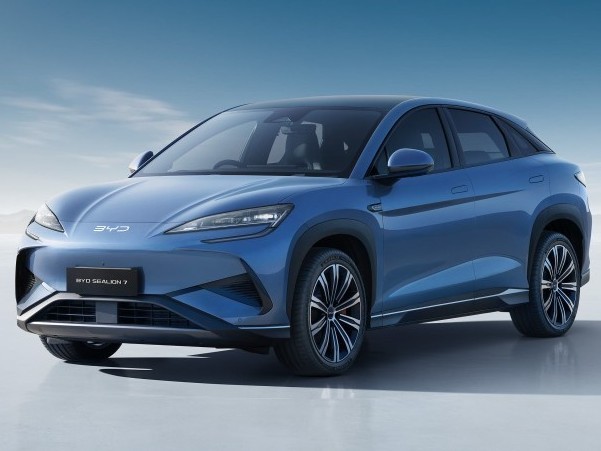
Best Value Pick! BYD Sealion 7 Delivers Excellent Range & Luxurious Features
MichaelApr 17, 2025

Try electric travel, which is more fun, BYD Sealion 7 or Xpeng G6?
MichaelDec 12, 2024
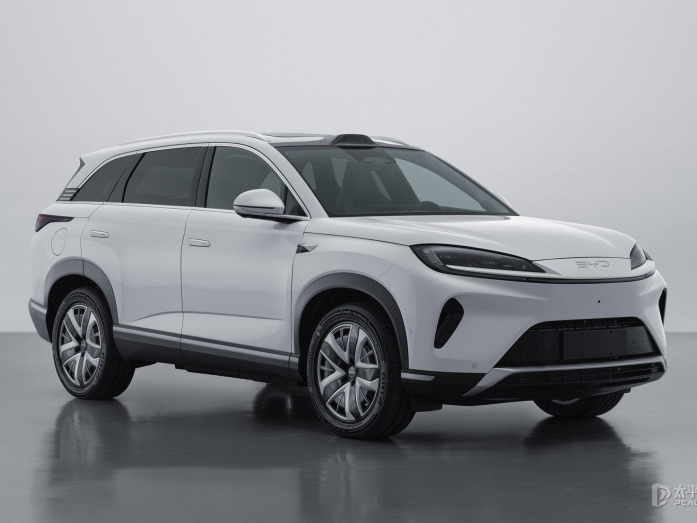
BYD Sealion 07 DM-i declaration image exposed: Fifth-generation DM technology, 0-100km in 4.9s!
LienDec 10, 2024
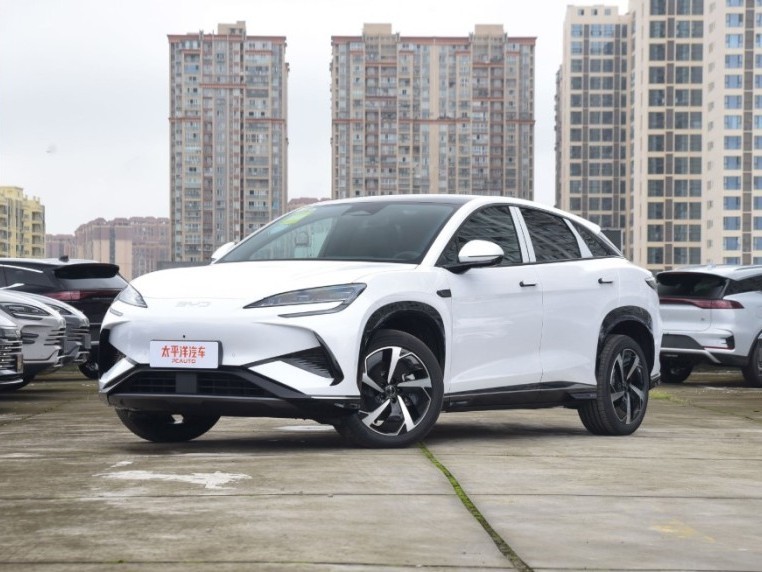
BYD SEALION 7 Thailand Motor Expo 2024 stealing the show: High cost-performance ratio, rich configuration!
JamesNov 29, 2024
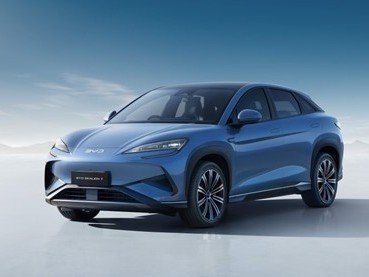
BYD SEALION 7 EV debuts in Malaysia, becoming the biggest competitor to Tesla Model Y
WilliamNov 20, 2024
View More




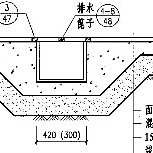


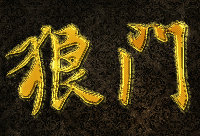

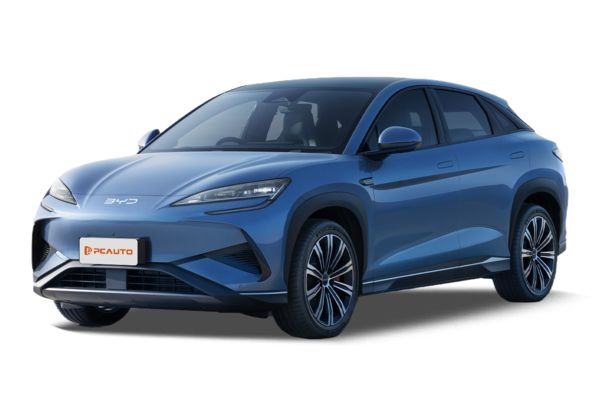
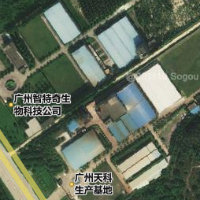
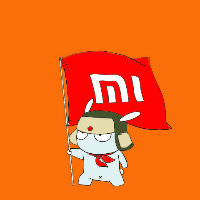

Pros
Cons